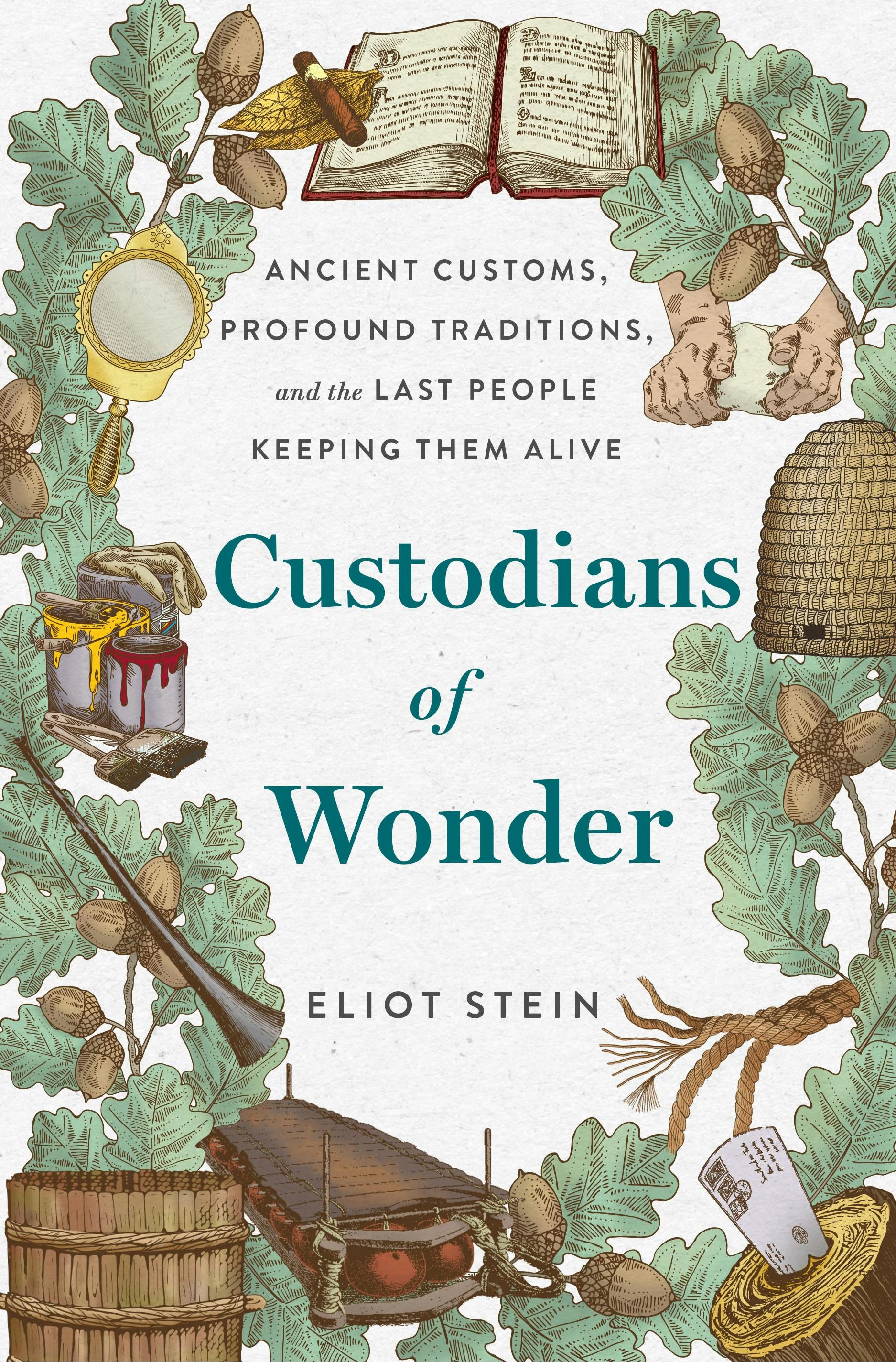Custodians of Wonder: Ancient Customs, Profound Traditions, and the Last People Keeping Them Alive - Eliot Stein - ★★★★.¼

AUTHOR: Eliot Stein
GENRE: Nonfiction, Travel, Sociology.
PUBLICATION DATE: December 10, 2024
RATING: 4.25 stars.
In a Nutshell: An astounding nonfiction work chronicling the endeavours of some “custodians of wonder”, people who are among the last few practitioners of their craft. Covers a variety of rare skills/jobs from ten countries, including one from India. Informative, insightful, dismaying, heartwarming. A beautiful book for those who still believe in the importance of traditions and want a ray of genuine hope in this fake/filtered world.
Globalisation and modernisation have brought many benefits to humankind, no doubt. Unfortunately, a globalised world also ends up diminishing and even destroying localism.
In this age of digitization and outsourcing, there are so many skills that are either considered obsolete or abandoned for easier, machine-made options. Even for something as basic as cooking, every subsequent generation is opting for simpler recipes and faster cooking methods. (Myself included. I can't even imagine doing the laborious and time-consuming procedures involved in Indian cooking the way my mother does.) Research has shown that any practice/language with reducing adherents dies out within a couple of generations. So many of the features and beliefs and traditions that make us essentially us are getting diluted/extinct this way. Thankfully, there are still enough people around the world doing their best to save their traditions, some of which have just a handful of practitioners left.
We often hear about who was the first to do something. This book takes the opposite approach. Author Eliot Stein, an experienced journalist and editor at BBC Travel, ventured across the world in search of people who are among the last purveyors of their skillset. In the ten chapters that comprise this book, he brings to us not only an almost-lost skill/job, but also the thought process of the person who still does it diligently.
The ten entries we see in this book cover a range of skills, from relatively common-sounding ones such as cooking and painting to the unusual bee-talking and mirror-making. However, the level of artistry we see even in the common skills is beyond par. Some of the techniques mentioned in the book take hours to create and years to refine. The commitment level seen in these people is much beyond most of the human population.
Reading the way these artisans not only commit to their work but also try to ensure the continuity of its legacy is inspiring. It is really sad that these people are among the last few left who still do what they do. Even their attempts at spreading the knowledge of their skillset haven’t borne much fruit, but they strive ahead in hope.
The book is a labour of love and it shows on every page, through every interaction, every anecdote. There is so much heart and reverence in the writing that readers can feel the same intense emotions the author must have experienced while interacting with these talented yet humble people. I love how he focussed not just on the art and the artist, but also included the ethos of the country and its history/geography/politics as needed. This helps us get a well-rounded picture of the art and its present endangered status.
At the same time, the writing isn't biased towards the artist nor blind to contemporary problems. The presentation is clear about the challenges faced. There is neither a forced optimism nor a false ray of hope. Each chapter winds up with a wonderment at what was, and a wondering about what is to come.
The skills/jobs highlighted in this book come from, not surprisingly, the four continents with the oldest and richest histories in the world: Africa, Asia, Europe, and South America. I do not wish to detail what exact talents and job roles the book includes as I want you to discover them for yourself. So here’s a slightly vague feedback.
Of the ten skills/jobs in the book, only one left me somewhat underwhelmed as I couldn’t see the “wonder” in the skill depicted in that chapter; it just felt like a modified work profile of a common-enough task. The remaining were mind-blowing. My favourites among the artistic inclusions were the stories about an Incan grass-woven bridge, an Indian mirror (no bias here; it was an astounding chapter!), a rare Sardinian pasta, and original Japanese shoyu. The chapters highlighting each of these have the perfect balance of history and geography, modernity and traditionalism, despair and hope. But the chapter that touched my heart the most was the final one, tantalisingly titled "The Most Romantic Job in Europe". The “wonder” in this chapter was almost magical!
I truly, truly appreciate that the research for this book wasn’t done sitting at home. The author actually travelled to all these places, visited with the artisans, and took the efforts to understand their point of view, and even the perspective of those who might not agree with their approach. This authenticity of reporting is evident in every chapter.
How I wish the book had included photographs also! There are so many beautiful places and techniques and creations mentioned that I had to keep running to Google to visualise what I was reading. Even B&W photographs would have helped somewhat.
Overall though, my complaints are teensy. I absolutely relished learning not just about an art but also about people, creativity, and determination. This book honours the essence of humankind – our individuality that no AI can replicate.
Much recommended to all nonfiction readers interested in sociology, anthropology, history, geography, travel, culture, and biography.
Wait... let me reframe that, because some of those subjects will drive most readers away. 🤭
Much recommended to all readers who appreciate human creativity and acknowledge the importance of traditions.


Comments
Post a Comment